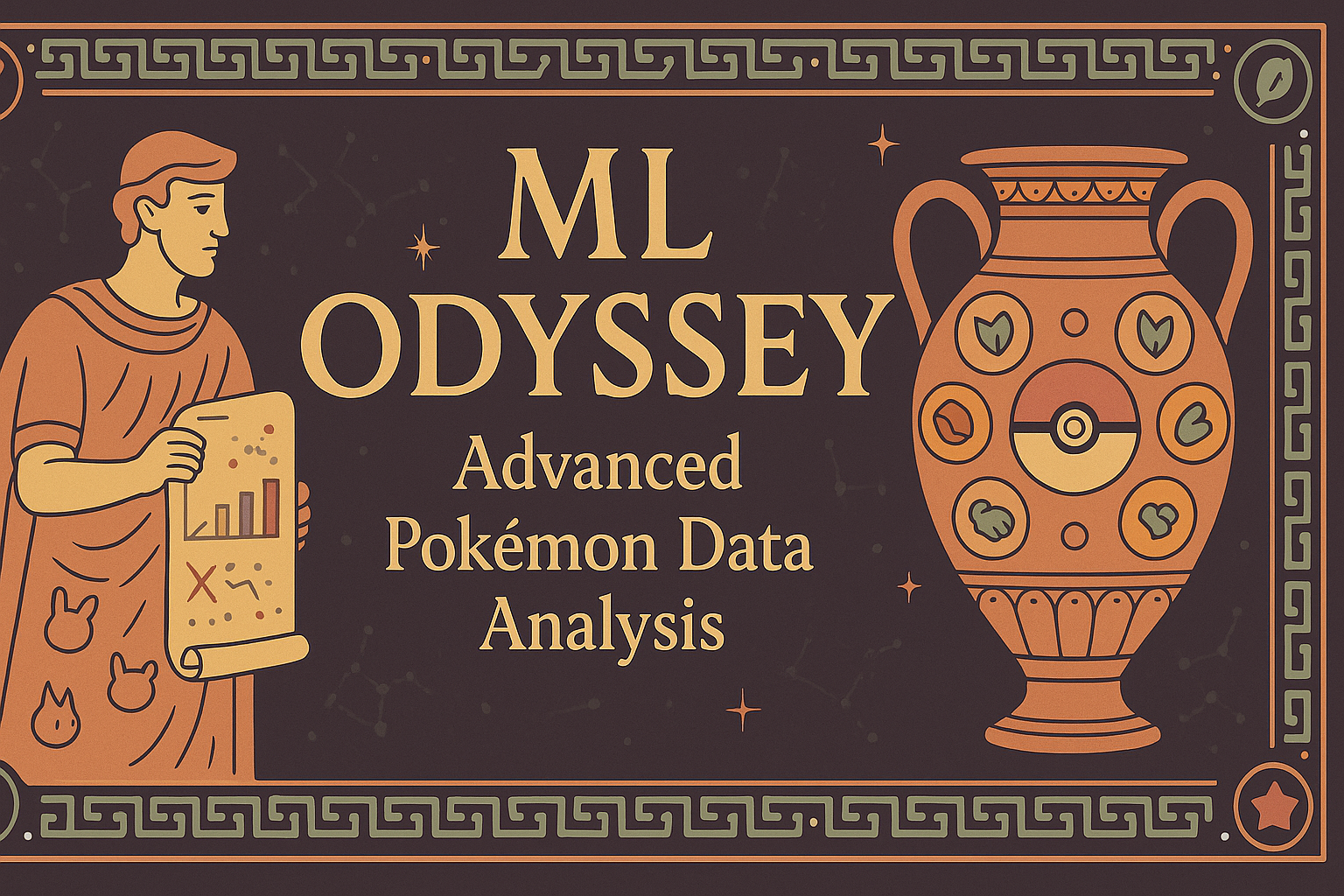ML Odyssey: Part 5 - Exploratory Data Analysis with Pokemon Dataset II

Q5. Are migration patterns different for Team Rocket members?
- 📈 Graph: Violin plot of migration counts per group.
- 🌍 Test: Mann-Whitney U test.
| |
 Mann-Whitney U statistic: 1510978.50
p-value: 0.0000
Mann-Whitney U statistic: 1510978.50
p-value: 0.0000
Descriptive Statistics: Team Rocket members - Median migrations: 16.0 Non-Team Rocket members - Median migrations: 12.0 Team Rocket members - Mean migrations: 16.6 Non-Team Rocket members - Mean migrations: 12.5 Result: 🏆 Significant migration pattern differences found between Team Rocket and non-Team Rocket members.
Q6. Do Rocket members tend to avoid charity participation?
- 📊 Graph: Grouped bar chart of charity participation rates.
- 🕵️♂️ Test: Fisher’s Exact Test for small sample sizes.
| |
 Fisher’s Exact Test p-value: 0.0000
Result: 🏆 Significant association between charity participation and Team Rocket membership.
Fisher’s Exact Test p-value: 0.0000
Result: 🏆 Significant association between charity participation and Team Rocket membership.Q7. Do Rocket members disguise themselves in certain professions?
- 📊 Graph: Horizontal bar chart of profession frequency per group.
- 🕵️♂️ Test: Chi-square test for profession-Team Rocket relationship.
Chart Analysis: Profession Distribution Visualization
| |

Statistical Analysis: Chi-Square Test and Effect Size
| |
Q8. Is there an unusual cluster of Rocket members in specific cities?
- 🗺 Graph: Geographic heatmap of city distributions.
- 📌 Test: Spatial autocorrelation test.
To answer this question properly, we need to go beyond simple statistics and consider the geographic layout of cities. Let’s break this analysis into clear steps:
Q8.1. Initial Data Overview
Let’s start by examining the distribution of Team Rocket members across cities with their actual coordinates:
| |
 We can see some differences between cities. But are these differences statistically significant and geographically clustered?
We can see some differences between cities. But are these differences statistically significant and geographically clustered?Q8.2. Standard Statistical Test (Chi-Square)
Now let’s answer the core question: Are there unusual clusters? Let’s use the chi-square test to determine if the clustering is significant.
| |
🤔 Why Can the Chi-square Test Be Misleading?
- At first glance, some cities look way more “infiltrated” by Team Rocket than others.
- So why doesn’t the Chi-square test always confirm this?
👉 Because it only checks the amount in each city, not where those cities are! - The Chi-square test:
- ✅ Sees if numbers are different between cities
- ❌ Ignores the map—doesn’t care if cities are neighbors or far apart
Example:
- Imagine:
- Scenario 1: Rocket members are scattered randomly
- Scenario 2: They’re all packed into a few neighboring cities
- The Chi-square test treats both the same!
(It can’t “see” the map, just a list of city names.)
⚠️ Bottom line:
If you want to know if there’s a geographic cluster, the Chi-square test might miss it.
It’s a classic trap: using non-spatial tools for spatial questions can hide the real story!
Q8.3. Spatial Autocorrelation Analysis (Moran’s I)
🗺️ Why Use a Spatial Algorithm? Meet Moran’s I!
- To really check if Team Rocket is clustering in certain areas, we need a test that understands the map!
- Moran’s I is built for this:
- It checks if high (or low) values are grouped together in space
- In our case: “Are cities with lots of Rocket members close to each other, forming a real ‘hot spot’?”
How it helps:
- Moran’s I will flag clusters that the Chi-square test might miss
- It knows which cities are neighbors and looks for patterns on the map
✨ In short:
If you want to know if something is spatially clustered, you need a spatial test.
Moran’s I gives you a direct, map-aware answer!
| |
Q8.4. Geographic Visualization
Finally, let’s visualize these patterns on the actual Kanto map:
| |

Q9. How does badge count affect the likelihood of being a Rocket member?
- 📉 Graph: Histogram of gym badge distributions.
- 🏅 Test: Kruskal-Wallis test.
Data Preparation
| |
Visualization: Badge Distribution Analysis
| |

Statistical Test: Kruskal-Wallis Analysis
| |
What’s Next?
In our next post, we’ll:
- Apply these pandas basics to a real-world dataset
- Learn advanced data cleaning techniques
- Create insightful visualizations
- Prepare data for machine learning
📝 Practice Exercise: Try these tasks to reinforce your learning:
- Create a DataFrame with your own data
- Practice different selection methods
- Try grouping and aggregating data
- Experiment with basic plotting
All code examples are available in our ML Odyssey repository.
